TCU’s Athletic Training Program Turns 50 This Year
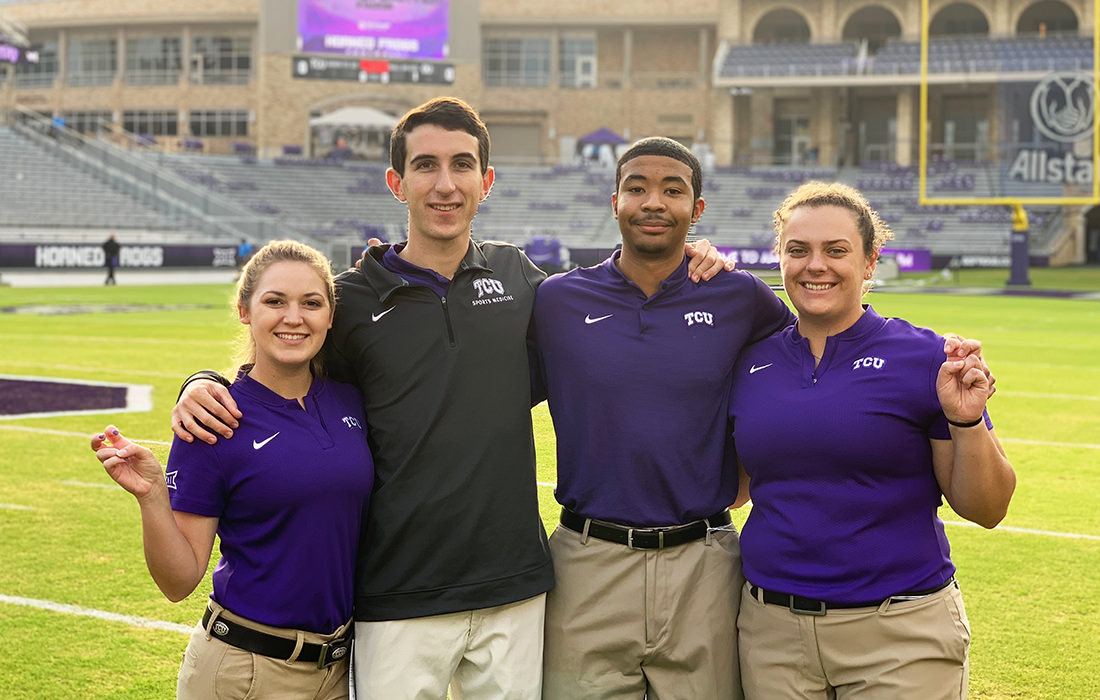
The Athletic Training program at TCU started within the College of Education 50 years ago because of its connection with physical education and teaching certification. When the Harris College of Nursing transitioned into the Harris College of Nursing & Health Sciences, the college was able to align itself with some of its other health disciplines, including athletic training.
Athletic Training as a Healthcare Profession
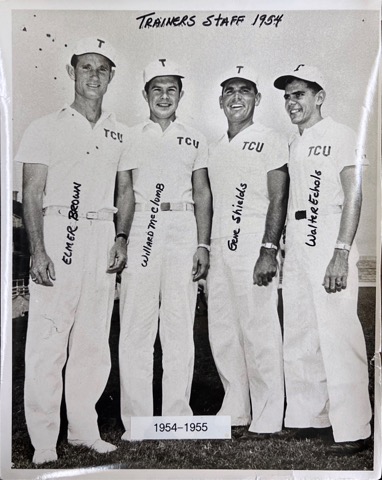
Sports exposure was at a high level that cannot be replicated. Historically, most of the athletic training programs had been housed in the Athletics Department. That all changed when Texas became the first state to have athletic licensure in 1971. And while several other universities were recognized across the nation, there was only one accredited Division I program in Texas – TCU.
Elmer Brown was the first athletic trainer at TCU. Ross Bailey, TCU Class of 1976, and Chris Hall, TCU Class of 1983, both went through TCU’s athletic training program and ended up being on staff for many years. Bailey and Hall had a huge role in moving the program forward. Bailey was involved with the initial accreditation once athletic training had an official accreditation process. Back then, there used to only be two routes toward licensure and certification, an apprenticeship or an approved curriculum.
“We utilized a lot of practical experience, clinical experience, teaching in the moment,” said Bailey. “We didn’t have any sim labs.”
He recalls at one point having a Sports Medicine Advisory Team (SMAT), where one physician in Fort Worth in every specialty, even OB-Gyn, would help teach. They would take students into surgery with them which was always an eye-opening experience: witnessing something happen on the field, seeing the medical evaluation, seeing the surgery and the rehab, and finally, doing the functional testing and returning them to play.
During his tenure, Bailey witnessed the introduction of arthroscopy, the MRI and refinement in CAT scans. It did not take long for TCU to implement the use of this new technology and rehabilitation techniques. “It was difficult to know the lasting effects of some injuries, but now we do, and we are better off because of them,” said Bailey. “Not only has technology and equipment changed, but the didactic academia behind it.”
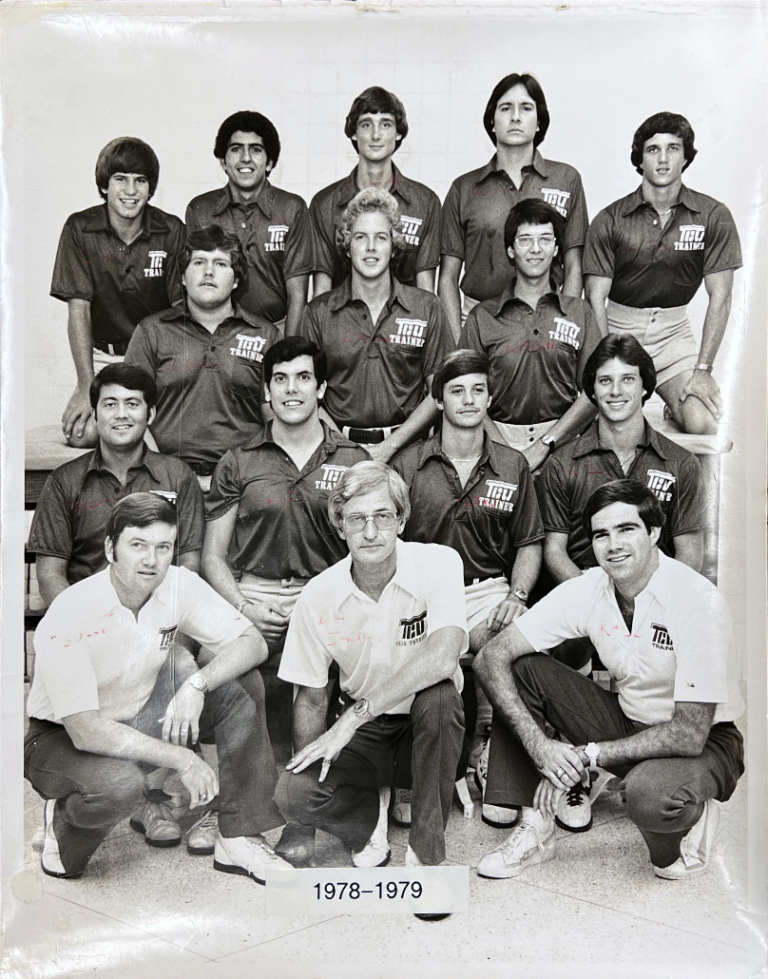
“I’m so impressed with what they’re doing academically, it’s incredible,” said Bailey.
Bailey went into athletic administration and has recently retired. Hall was the head trainer for TCU men’s basketball. He is now working with one of the health care systems in Fort Worth.
Athletic Training Today
Until just a couple of years ago, athletic training was an undergraduate program. All athletic training programs had to transition to a graduate degree to remain accredited.
“The myth is that athletic trainers are viewed more as personal trainers, and that’s not really what we do,” said Stephanie Jevas, Ph.D., program director for the athletic training program at TCU. “Our domains range from prevention of injury and illness, evaluation and diagnosis, and interventions including therapeutic modalities and rehabilitation.”
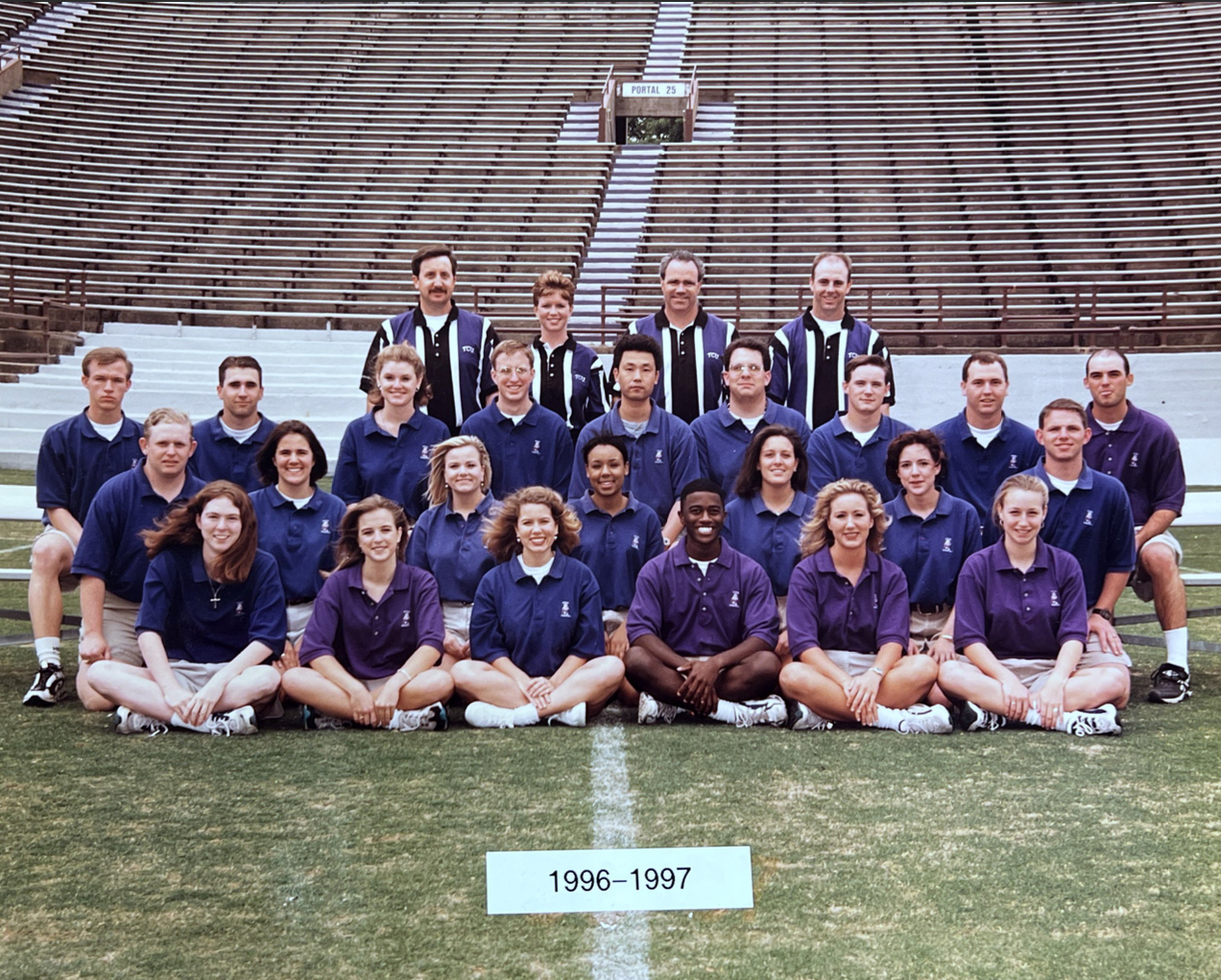
One of the things that sets athletic training apart from physical therapy is the aspect of on-site immediate and emergency care. Students must learn how to assess injuries in the moment. Another essential part is the administrative piece like how to build a budget, manage inventory and develop policies and procedures. Emergency action plans, lighting safety and learning how to manage environmental conditions are all important aspects of being a competent and successful athletic trainer.
In their second year, students take behavioral health conditions, and for athletic training, this is part of their clinical immersion. This immersive setting is where students get the opportunity to develop a behavioral health plan specific to their setting. Behavioral health plans are different from emergency action plans in that they focus on conditions that athletic trainers may encounter in clinical practice, like anxiety, depression and eating disorders. Plans include recognition and management, education for student-athletes and coaches, and the referral process. Athletic trainers have the opportunity to work with their patients on a daily basis and are often the first to recognize when they are struggling with a behavioral health condition.

Today, the athletic training program at TCU offers an early admission master’s pathway where students spend the first three years in movement science, and then they come into the athletic training program the summer before their fourth year. Going this route allows students to acquire two degrees in five years. Students may also apply to the graduate program once they have earned their undergraduate degree and have met certain prerequisites. Most of these applicants have completed degrees at other universities who then come to TCU for the graduate athletic training program.
“TCU really cares about the students. Our precious commodity is the students,” said Bailey. “Without them, they don’t need any of the rest of us.”
Jevas is one of the many advocates for athletic training because many professions still don’t know what athletic training truly is. This is one of the reasons the program is so involved with interprofessional education. They work closely with physicians, physical therapists, strength conditioning coaches and dietitians. This learning model allows students to learn how to work in teams, become good communicators and learn how to lead.
“One of the greatest things was seeing a student’s eyes light up, I call it when the light bulb finally came on,” said Bailey. “You had been hammering them in anatomy and physiology classes, some chemistry, and finally at the end of their sophomore or junior year, you could see that they were finally getting it; you see the application.”
He mentioned the pride that exists in knowing that you helped an athlete reach their goals. “All those firsts. The first ball game, the first championship. The people you are with while you did that, are a symbol of what the group accomplished,” said Bailey.
“50 years to a 23-year-old feels like a lifetime,” said Bailey. “50 years to me is a drop in a bucket.” Some of Bailey’s proudest moments include making those connections with his students and witnessing their growth over the years.
The Next 50 Years
In undergrad, Jevas’ focus was initially on physical therapy until she realized she wanted something more sports related. She did not know what that would look like at that time until she spoke to her academic advisor, Dr. Jerry Elledge, at Texas A&M. He sent her to athletics where she worked as an athletic training student. Back then, the athletic training rooms were segregated. She remembers her group being the first women allowed to step on the football sidelines at A&M, but still only being able to work games. Today, we are seeing more and more opportunities for women.
“It’s nice to turn on the TV and you see more women on the sidelines,” said Jevas.
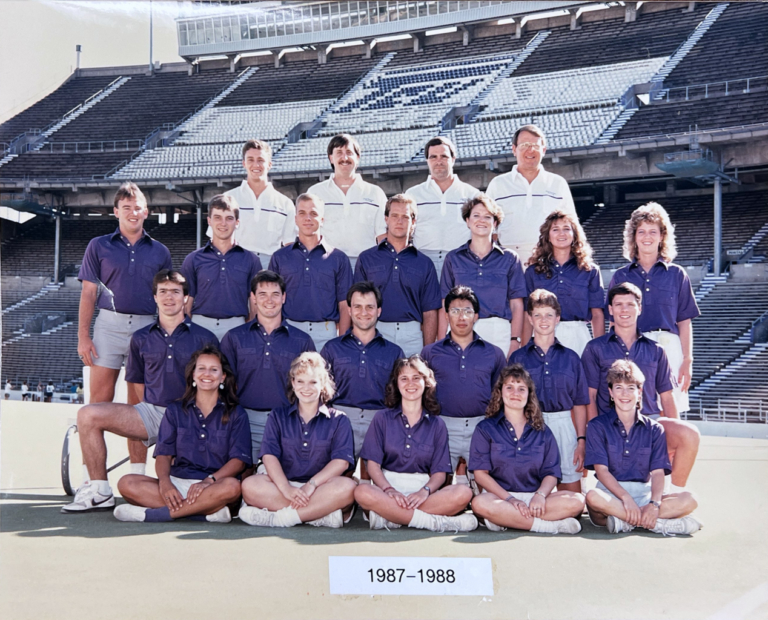
Historically, athletic training students were male. Until a large shift in the 80s when more than half the students became women. The front cover of the book “Far Beyond the Shoe Box: Fifty Years of the National Athletic Trainers’ Association” pictures a photo of all male members back in 1951. Today, over half of its members are women. This shift is reflected, partly due to Title IX, not only in athletic training but health care opportunities in sports overall. Today, over 57 percent of certified athletic trainers in the US are women.
More work needs to be done when addressing the salary issues. Athletic trainers are some of the most educated, and most exposed from a liability standpoint, of anybody in an athletic department, and yet they are not compensated for that.
As an approved provider for continuing education, one of the program’s goals is to grow its preceptor’s education and determine what opportunities TCU can offer. A preceptor is a mentor for athletic training students in their clinical setting. They help provide students with day-to-day hands-on training and guidance.
More Than Just Sports
One of the biggest things that have changed over these last 50 years is the settings that athletic trainers are going into. In the past, one would usually go into a high school, college or professional setting to practice athletic training. Today, entities within the community, like the Fort Worth Fire and Police Departments and, even Amazon, have athletic trainers working at their facilities.
“The educational model has evolved drastically. But also, so is what our students are doing after graduation,” said Jevas about the success of its graduates.
She explained how many from the undergrad program have gone on to graduate assistant positions. Alumni are working in the NFL with teams such as the Dallas Cowboys, New England Patriots, Cleveland Browns and San Francisco 49ers.
In addition, students have participated in seasonal internships with the Dallas Cowboys and Minnesota Vikings. One student even toured with Canadian rapper, Drake, as an athletic trainer in the performing arts. Two students are currently touring with Disney on Ice, and some are in local high schools and physician offices.
Here’s to a job well done, TCU! Cheers to the next 50 years!